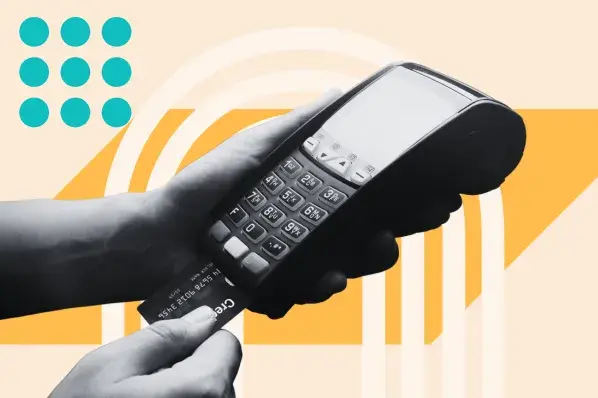But, finding the right incentive isn't a simple task. Give too much, and your business will lose money. Give too little, and your customers won't give it a thought. Finding the right balance takes effort and a deep understanding of your survey's target audience.
In this post, let's dive into survey incentives and discuss the right way to use them. Then, we'll list some low-cost options you can consider when creating an offer for your business.
But first, let's go over the basics regarding what incentives are and why you should use them.
What Are Survey Incentives?
Survey incentives are offers or gifts that are provided to survey participants. These promotional goods motivate respondents to complete surveys and provide honest feedback to a company.
Survey incentives come in many forms. Some companies use monetary offers while others promote freemium products and trial subscriptions. Depending on the survey and information you're trying to obtain, your incentives should be unique and match the investment that participants will put into your questions.
If you haven't used a survey incentive yet, it's okay to be skeptical. After all, you're offering up something for free with the hope that you'll get information in return. If you're an SMB owner, you're going to need some more reassurance before you make this type of move.
Why you should use survey incentives.
The concept of incentives is pretty straightforward. I scratch your back, you scratch mine. Or, in this case, you answer a couple of subjective questions and I'll give you a gift-basket in return. It's not hard to see how this approach would be an effective way of drawing in participation.
But, is it worth it? If you give every participant a gift-basket, you'll need to get that same value back in customer data.
Well, one study found that just by adding a five-dollar prepaid discount resulted in double the survey responses. Another company found that a two-dollar movie coupon increased its response rates by 300%. These are small incentives, but they're yielding major payouts for these businesses.
Still, it's not as simple as slapping a gift-card to the end of the survey and calling it a day. Companies that are successful using survey incentives understand these offers can quickly lead to compromised data if left unchecked. While you want to increase responses, you don't want customers hastily filling out your survey just for the reward. You want thoughtful, honest feedback so you can use it to improve their experience.
If you want to employ survey incentives the right way, take a look below for some best practices when using these offers.
How to Use Survey Incentives
1. Determine if your survey needs an incentive.
The best way to ensure your data is unbiased is to avoid an incentive altogether. If your survey has great response rates and customers are happy to fill it out, it doesn't need an incentive.
For example, NPS® surveys typically don't need an incentive. These are one-question forms that take seconds to fill out. Adding an offer here would be useless because you won't draw a significant increase in responses.
Instead, choose a survey that you know customers will hesitate to complete. These could be product reviews, usability tests, or any other form that requires a large time investment from the participant. Or, if you're participants are traveling to your office for a focus group or testimonial, that's an excellent opportunity to entice them with an incentive.
The idea is to thank customers for putting in that extra time to provide thought-provoking feedback to your business.
2. Choose the survey incentive type.
As we mentioned above, there are many types of survey incentives. It's important to consider your target audience and choose one that fits their specific needs and interests. Here are a few you can pick from:
Monetary Incentives
Monetary incentives are cash-driven offers. These are discounts, coupons, and giveaways that customers can redeem at your business. Or, you can partner with another company to provide discounts for each other's products, expanding your reach and sharing potential leads.
Non-monetary Incentives
Non-monetary incentives are typically more unique than monetary ones. That's because these offers appeal to the participant's needs and goals. They help respondents accomplish tasks that they couldn't have done before completing the survey.
3. Estimate the survey incentive's value.
This is arguably the most important step when using survey incentives. You need to ensure your offer is worth the investment that participants are putting into your surveys. If it's too little, people won't be interested. If it's too valuable, then you'll end up losing money in the long run.
To find the right incentive, you need to take into consideration a few factors. First, think about your budget and what it allows you to offer. Next, assess the size of your target audience as well as what you can provide if everyone were to participate in your survey. Lastly, consider your delivery method and whether or not you'll need additional money to deliver your incentive.
4. Establish an effective delivery method.
After you've decided what you'll offer, you'll need to consider how it will be given to your participants. This is largely dictated by the medium that your survey uses.
For example, if your survey is sent via email, then your incentive should be digital. Unless you're offering a major incentive, it would be odd to mail a coupon or discount when you just sent the customer an email.
The same goes for in-person incentives. If you're asking participants to travel to your offices, don't let them leave empty-handed. It's a pretty unsatisfying experience to show up expecting a gift only to be told that it'll arrive in the mail three days later.
5. Pick a timely opportunity to offer the survey incentive.
Once you know what you'll offer and how it will be delivered, the final step is determining its timing. Picking the right time to send out your incentive can make a major impact on how customers will fill out your survey. Below are the two options you can choose from when distributing your offer.
Prepaid Incentives
Prepaid incentives can be either monetary or non-monetary, and what makes this type of offer unique is its timing. Prepaid incentives are given to participants before the survey is completed. This is done in good faith that the respondent will complete your survey without rushing or omitting answers.
Promissory Incentives
Promissory incentives are the opposite of prepaid ones. They're introduced at the beginning but given out at the end of the survey. This motivates participants to complete longer forms that may feel tedious or repetitive.
Now that we've covered the basics of survey incentives, let's dive into some low-cost ideas you can use at your business.
Low-Cost Survey Incentive Ideas
- Sample Product or Trial Subscription
- Customer Loyalty Programs
- Charitable Donation
- Whitepapers
- Sweepstakes
- Coupons
- Partner Reward
- Small Cash Rewards
1. Sample Product or Trial Subscription
The best way to incentivize customers is with something free. It's quick, it's simple, and it can be cheap if done the right way.
If you're a SaaS company, consider offering a freemium subscription to your service. Or, if you're selling a physical product, you can distribute a sample or prototype version of your best-selling item. This way, customers can try out your product for free and see if they like it before buying it.
2. Customer Loyalty Programs
If you already have a customer loyalty program set up, why not share some of its benefits with your survey participants?
You can give customers access to temporary loyalty benefits, so they can experience what it's like as one of your most valued customers. And, this may convince some users to sign up for your loyalty program once they try a test run.
3. Charitable Donations
If you don't have much to offer your respondents, you can provide the option to donate to charity instead. So, whenever a customer fills out your survey, you'll donate a specified amount to a charity of their choosing. Or, if you know that your customer base cares deeply about one cause, you can set up a campaign where all donations will be made to one charity. This is an excellent way to do something right while making a connection with your users.
Some customers don't want a gift in return and will appreciate your generosity much more. So, even if you don't want to create a company-wide campaign, you can still offer donations as an alternative to receiving a gift, just like how LinkedIn did with its survey below.

Source: Medium
4. Whitepapers
According to my colleague, Lindsay Kolowich, "A whitepaper is a persuasive, authoritative, in-depth report on a specific topic that presents a problem and provides a solution."
Whitepapers are excellent, low-cost incentives because they're typically created from data you already have on your customers or industry. Your team is just organizing and distributing the information so that it's accessible to your target audience. And, it shows customers that you're focused on their long-term needs and goals, not just selling them products.
5. Sweepstakes
You may think a sweepstake would be a costly incentive for a survey. However, it can be relatively cheap if you invest your budget into one major prize. Every participant who completes the survey is entered into the contest and has an equal chance of winning the grand prize. This can be a lot more appealing to customers who are looking for a bigger thrill than just a five-dollar coupon.
6. Coupons
Now don't get me wrong. If you've seen Extreme Couponing you know that some people simply can't turn down a good deal. This is where coupons can be your bread and butter when it comes to survey incentives.
If you're worried about losing too much to discounts, these numbers might put your mind at ease. Studies show that 90% of American consumers use coupons. However in 2017, roughly 293 billion coupons were released in the United States, but only 2 billion were redeemed. That means while customers enjoy taking coupons, less than one percent will use them.
7. Partner Reward
If it makes sense, you should consider partnering up with another company to create a joint-incentive for both of your surveys. You can provide their customers with a small discount while your partner does the same for your survey participants. This is a great way to show customers that you understand and align with their personal interests.
8. Small Cash Rewards
At the end of the day, cash is a highly effective way of motivating people. But, you don't have to break the bank to get participants to finish your survey. A survey conducted by the United States Department of Veteran Affairs found that adding an incentive of five dollars increased responses by 30%. And, if you make that five-dollar incentive prepaid, you'll increase responses by almost 50%.
While they're not the most creative, there's a reason why cash rewards are effective.
For more ways to improve your surveys, read how to write survey questions.
.png?width=112&height=112&name=Image%20Hackathon%20%E2%80%93%20Horizontal%20(24).png)




![How to Write a Thank You Letter for Customer Feedback [Templates]](https://53.fs1.hubspotusercontent-na1.net/hubfs/53/thank-you-letter-for-customer-feedback-1-20241003-1267887.webp)


.png)

-1.png)

